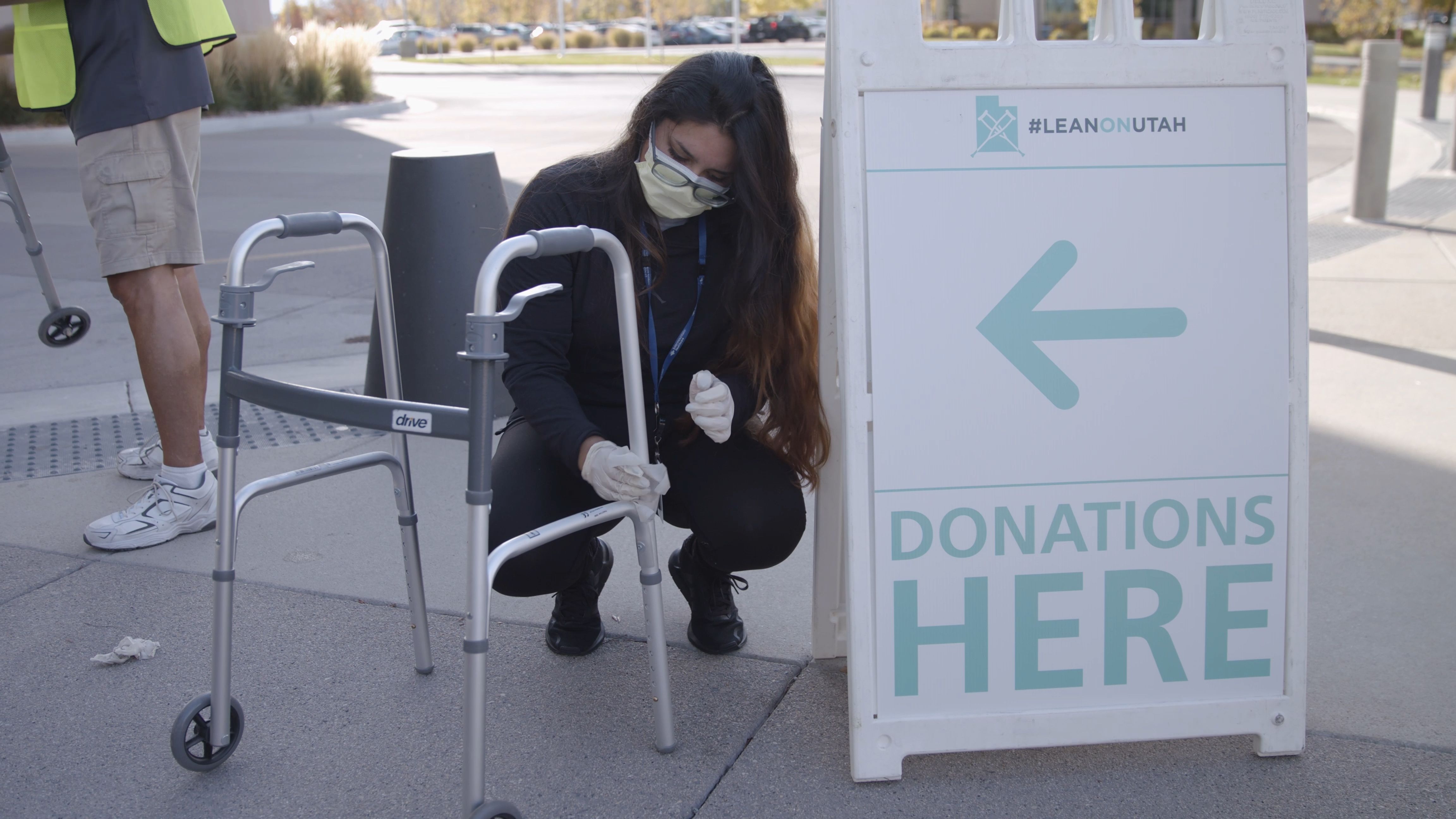Hospitals need more than hope to deal with supply chain challenges
The COVID-19 pandemic continues to create supply headaches for hospitals. Intermountain Healthcare’s director of supply chain logistics talks about better strategies.
When hospitals in Utah put out a public request for donations of crutches, Gordon Slade didn’t know what to expect.
Gordon Slade, Intermountain Healthcare

Slade, the senior director of supply chain logistics at Intermountain Healthcare, said he hoped a groundswell of community spirit would spur donations. Intermountain, University of Utah Health, the Utah Hospital and Steward Health all participated in a joint campaign to get used crutches, walkers and wheelchairs. The campaign, dubbed “LeanOnUtah,” drew thousands of donated items this fall.
The drive provided around 2,000 crutches, 1,000 walkers, a few hundred wheelchairs and other items.
“For us it was the right time and it did offset some shortages,” Slade said. He noted staff worked to ensure the crutches, wheelchairs and other items would be safe to use.
The “LeanOnUtah” campaign is the latest novel solution some hospitals systems have employed to deal with ongoing supply chain headaches during the COVID-19 pandemic. A Kaufman Hall survey in October found 99% of hospitals said they have had problems getting needed supplies.
Hospital supply managers will need to be creative and proactive to deal with supply chain issues. Slade discussed some lessons supply chain leaders must embrace.
- Read more: Hospitals struggle with supply shortages and higher prices, and it won’t end anytime soon
Hope is not a tactic
Supply chain managers must plan ahead and talk with suppliers as early as possible.
“We’re constantly forecasting and working with suppliers to try and get in front of any supply disruption,” Slade said.
In other words, the days of trying to order supplies a few days before they are needed is over.
“We have to be far more proactive than setting out a purchase order,” he said. “The hope strategy is gone.”
Intermountain Healthcare and other hospitals in Utah made a joint public appeal for crutches, walkers and other items. The "LeanOnUtah" campaign generated thousands of donated items. (Photo provided by Intermountain Healthcare)

Continuity plans
Intermountain is continuously reaching out to suppliers to see if they have continuity plans to deal with shortages of certain items. Slade said that’s a factor when looking at suppliers and is factored into contracts.
“We need to work with suppliers to ensure proactively they have a mitigation plan, a business continuity plan,” he said.
Hospital managers always want to get the best price possible, but it may be worth paying a bit more if a supplier can reliably deliver the items needed. Increasingly, Slade said, it’s worth looking for more local or domestic suppliers. In the future, Slade projected hospital supply chain leaders are going to look for more domestic suppliers of products.
Finding substitutions
With some items in short supply, Slade said sometimes it’s necessary to look for alternatives.
“Right now, we probably have more substitutions than we’ve ever had,” Slade said.
Supply managers have to be talking with various departments in healthcare systems to get their list of acceptable alternatives if some items aren’t available.
It requires being nimble and some medications can't be substituted. But having a good list of options for many items helps avoid empty shelves.
“We’re very fortunate,” Slade said. “We’ve made that investment to stay in front of it.”
Communicate
It’s essential to be talking regularly with clinicians. At Intermountain, Slade said he thinks they’re talking to clinical staff more than ever before to assess needs and find substitutes when needed.
“They have been very understanding as long as we can still meet the clinical efficacy,” Slade said.
Earlier in the pandemic, Slade said there was a bit of pushback at first during some supply challenges but staff became more understanding. Complaints about the color of a gown were later replaced with gratitude for having a gown in the first place.
“We’ve probably never been tighter than we are now with our clinicians,” Slade said.
Hearing the wake-up call
The COVID-19 pandemic illustrated the fragility of the supply chain.
“It was a wakeup call,” Slade said. “We were working off a supply chain where everything had to be perfect in order for it to work. Now we know what happens when it doesn’t work.”
Slade said it’s key to embrace new strategies and work to anticipate risk and problems.
Hospitals must invest in supply chain strategies to lower costs long-term and also improve reliability, he said.
While stressing there is still a great deal to learn, Slade said, “We’ve learned a lot about what we can do.”
Telehealth faces a looming deadline in Washington | Healthy Bottom Line podcast
February 12th 2025Once again, the clock is ticking on waivers for telemedicine and hospital-at-home programs. Kyle Zebley of the American Telemedicine Association talks about the push on Congress and the White House.